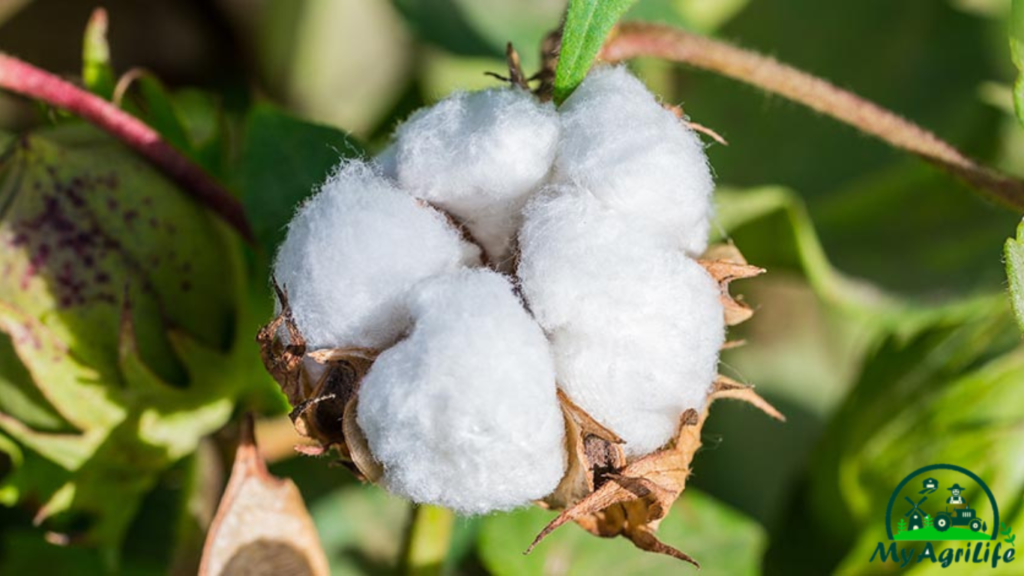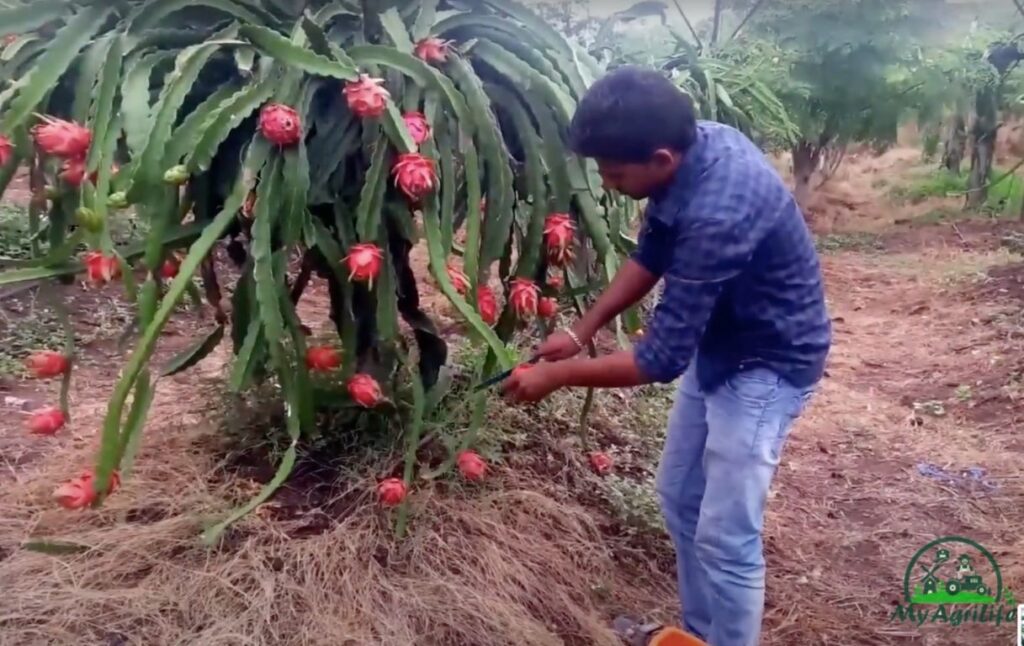
Fig, also known as Anjeer in Hindi, is a fruit that is widely grown in the Middle East, Mediterranean, and other regions with a similar climate. It has a unique shape and a sweet, chewy flesh that is often eaten dried.
The fig tree is a member of the mulberry family and produces a unique fruit that has a thin skin and soft, juicy flesh with tiny seeds. Figs are rich in fiber, vitamins, and minerals, and are a good source of antioxidants. They are also low in calories and fat, making them a healthy addition to any diet.
Figs are commonly eaten dried, which concentrates their sweetness and makes them a popular snack. They can also be eaten fresh, grilled, or roasted, and are a popular ingredient in many recipes, including desserts, salads, and savory dishes.
In addition to their delicious taste and nutritional benefits, figs have been used in traditional medicine for centuries to treat a variety of health conditions, including digestive problems, skin irritations, and inflammation.
Seed Specification Fig
The fig fruit contains numerous tiny seeds that are embedded in the soft, fleshy pulp. The seeds are small, about 1-2 mm in length, and are usually oval or kidney-shaped. The color of the seeds can vary, ranging from light yellow to dark brown or black, depending on the variety of fig.
Fig seeds are rich in nutrients, including protein, fiber, and minerals such as calcium, magnesium, and potassium. They also contain beneficial compounds such as phenolic acids and flavonoids, which have antioxidant properties and may help protect against various diseases.
When planting figs, it is important to use fresh seeds to ensure the best germination rates. The seeds should be cleaned and soaked in water for a few hours before planting. They can be planted directly in soil or started in pots and then transplanted once they have sprouted.
It’s worth noting that many fig varieties are propagated through cuttings rather than seeds, as this is a more reliable way to ensure the fruit characteristics of the parent plant are maintained.
Land Preparation & Soil Health Fig
Fig trees can be grown in a wide range of soils, but they prefer well-drained soils with good organic matter content. Prior to planting, the land should be cleared of any weeds, rocks, or debris, and the soil should be tilled to a depth of 30-40 cm.
If the soil is heavy and clayey, it may be beneficial to add organic matter such as compost or well-rotted manure to improve drainage and soil structure. If the soil is sandy, adding organic matter can help improve water-holding capacity.
Fig trees prefer a soil pH between 6.0 and 6.5, so it may be necessary to adjust the pH of the soil if it is outside of this range. A soil test can help determine the pH and nutrient levels of the soil, and the results can be used to determine any necessary amendments.
In terms of planting, it is recommended to plant fig trees in the spring, after the last frost. When planting, the hole should be dug deep enough to accommodate the root ball, and the soil should be packed firmly around the roots to eliminate any air pockets. Watering the tree thoroughly after planting can help settle the soil around the roots.
Once established, fig trees require little maintenance beyond occasional pruning to shape the tree and remove any dead or damaged branches. Regular fertilization with a balanced fertilizer can help ensure healthy growth and fruit production.
Crop Spray & Fertilizer Specification Fig
Crop spray and fertilization are important factors in growing healthy and productive fig trees. Here are some guidelines for crop spray and fertilizer specification for fig trees:
Crop Spray
1.Dormant season spray: Before bud break, apply a dormant spray of horticultural oil to control overwintering pests such as scale insects.
2.Pre-bloom spray: When the fig tree is in the early stages of bud development, spray with a fungicide to control diseases like fig rust and leaf spot.
3.Post-bloom spray: After the fig tree has bloomed, apply a second fungicide spray to protect the developing fruit from disease.
4.Insect pest spray: If insect pests such as mites or whiteflies become a problem, spray the fig tree with an insecticide that is labeled for use on fig trees.
Fertilizer Specification
1.Nitrogen: Fig trees require a moderate amount of nitrogen, but too much nitrogen can lead to excessive vegetative growth and reduced fruiting. A balanced fertilizer with an N-P-K ratio of 8-8-8 or 10-10-10 is suitable for fig trees.
2.Phosphorus and Potassium: These nutrients are important for fruit development and overall tree health. A fertilizer with a balanced N-P-K ratio can provide adequate amounts of phosphorus and potassium.
3.Micronutrients: Fig trees require micronutrients such as iron, zinc, and manganese for optimal growth and fruit production. A fertilizer that contains micronutrients or a separate micronutrient spray can help ensure that the tree receives these essential nutrients.
It is important to follow the manufacturer’s instructions when applying fertilizers and crop sprays to fig trees, and to avoid over-application, which can lead to soil and water pollution, as well as negative impacts on plant health and fruit quality. Regular soil testing can help determine the nutrient levels in the soil and guide the application of appropriate fertilizers.
Weeding & Irrigation Fig
Weeding and irrigation are important factors in growing healthy and productive fig trees. Here are some guidelines for weeding and irrigation of fig trees:
Weeding
Weeds can compete with fig trees for water and nutrients, and can also serve as hosts for pests and diseases. Therefore, it is important to keep the area around the fig tree free of weeds. Hand weeding or the use of a hoe is often the most effective method for controlling weeds. Mulching around the base of the tree with a layer of organic material such as straw or wood chips can also help suppress weed growth and improve soil health.
Irrigation
Fig trees require regular irrigation, especially during dry periods. The amount and frequency of irrigation will depend on factors such as soil type, climate, and tree age. Generally, young trees require more frequent irrigation than mature trees, and sandy soils require more frequent irrigation than clay soils.
It is important to avoid over-irrigation, which can lead to waterlogged soils and root rot. A general guideline for irrigation of fig trees is to provide enough water to moisten the soil to a depth of at least 30 cm, but not to saturate the soil. A drip irrigation system can be an effective way to provide water to the tree while minimizing water waste and over-irrigation.
In general, it is best to irrigate fig trees in the morning or evening when temperatures are cooler and evaporation rates are lower. This will help ensure that the water reaches the roots and is not lost to evaporation.
Harvesting & Storage Fig
Harvesting and storage are important factors in maintaining the quality and shelf-life of figs. Here are some guidelines for harvesting and storage of figs:
Harvesting
Figs should be harvested when they are fully ripe but still firm. The ripeness of the fig can be determined by gently squeezing the fruit – it should yield slightly to pressure, but should not be mushy or overly soft.
Figs can be harvested by hand or by using pruning shears to cut the stem just above the fruit. It is important to handle the fruit carefully to avoid bruising or damaging the skin.
Storage
Fresh figs are highly perishable and should be consumed or processed as soon as possible after harvest. If immediate consumption is not possible, figs can be stored in the refrigerator for a few days. To extend the shelf-life of fresh figs, they can be frozen for later use in recipes such as jams, sauces, or baked goods.
Dried figs have a longer shelf-life and can be stored at room temperature in an airtight container for several months. To dry figs, they can be sliced in half and laid out on a drying tray or screen, and placed in a warm, dry location with good air circulation until they are dry and slightly sticky to the touch. Alternatively, figs can be dried in a food dehydrator.
It is important to avoid storing fresh figs in a sealed container, as they can produce ethylene gas, which can cause the fruit to over-ripen and spoil quickly.
Conclusion
Fig farming can be a rewarding and enjoyable experience for those who have the appropriate growing conditions. Figs require full sun, well-drained soil, and regular irrigation to thrive. Proper pruning and fertilization can help improve fruit production and tree health, while regular weeding and pest management can help prevent problems before they occur.
When it comes to harvesting and storage, it is important to handle the fruit carefully to avoid bruising or damage, and to consume or process the fruit as soon as possible after harvest. Drying figs can be a great way to extend their shelf-life, and frozen figs can be used for a variety of culinary applications.
Overall, fig farming can be a fun and rewarding hobby or a profitable commercial venture, with proper care and management.









